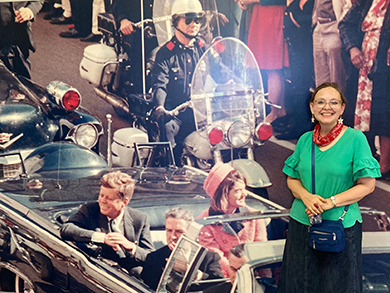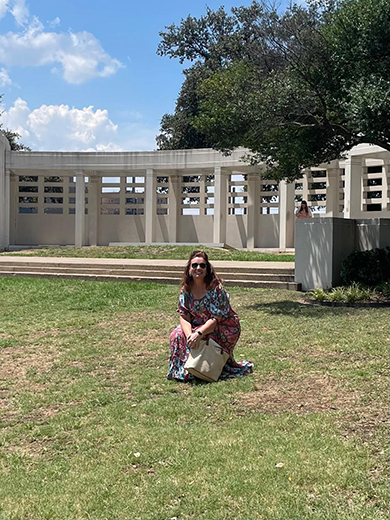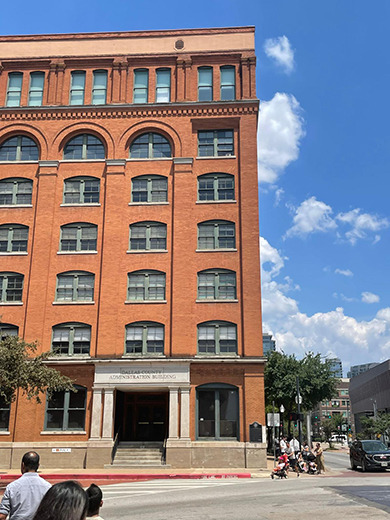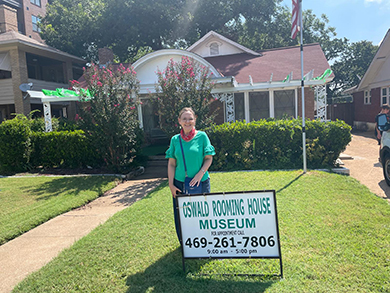The “Only in America” Tour—Part 3
The Day America Lost Its Innocence
On November 13, 1964, President Lyndon B. Johnson issued Proclamation 3627, which designated the fourth Thursday of November in each year as Thanksgiving Day. Johnson wrote:
“So as our forefathers in Virginia, in New England, and throughout this land have done for more than three and one-half centuries, let us appoint a special day on which all of us, in keeping with the dictates of our own conscience, will give thanks to the Lord for His manifold blessings. And on that day, let us rededicate ourselves to meeting the challenges of the present with the fortitude and faith with which our forefathers met the challenges of the past.”

The first time Thanksgiving was celebrated as a federal holiday was on Thursday, November 26, 1964. No doubt that weekend conjured up sad memories for President Johnson and for all Americans. The year before, on November 22, 1963, President John F. Kennedy was assassinated in Dallas, Texas. With this proclamation, I believe, Kennedy’s successor wisely redeemed the anniversary of a national tragedy: he turned the bittersweet season of fall into a time when families could look forward to a long weekend off from work, when they could gather together and acknowledge their blessings.
This past summer, my friend Thea and I visited Dallas, Texas, as part of our “Only in America” Tour. True crime junkies that we are, we jumped to tour the route of what has been called “the greatest mystery in American history”: the assassination of JFK. Only in America would the site of a such a tragedy become a city’s epicenter for tourism—complete with a museum, gift shop, and tour companies.
It is no mystery, of course, that President Kennedy was shot and killed, or that the presumed shooter, Lee Harvey Oswald, was himself later shot and killed by Jack Ruby. The intrigue lies in questions that have not been answered to everyone’s satisfaction:
- Did Oswald operate alone or was there another shooter?
- Did Oswald act independently or was he a pawn in a larger conspiracy?
- If there was a conspiracy, who was behind it: Russia, J. Edgar Hoover, or another political enemy?
- Likewise, did Jack Ruby act independently or was he hired by the mob or others to prevent Oswald from talking, to cover up a larger conspiracy?
- And what about the Warren Commission, which was appointed by the government to investigate the crime? Not everyone agreed with their conclusions.
- How many bullets actually struck President Kennedy? With what trajectory?
- Were the autopsy records altered to fit “the story” the government wanted to sell?

These questions and others have spawned 60 years’ worth of conspiracy theories. Countless books and articles about the assassination have been written by professional historians, armchair enthusiasts, and plain ole wackos. (I have yet to determine which category our tour guide belonged to . . . but I have a theory.)
My purpose in writing this humble blog is not to wade into the swamp of speculations; my interest is in how this single event has resonated in our national consciousness. When he was a young Texas newspaper reporter covering the assassination, CBS news correspondent Bob Schieffer said it was the “weekend that America lost its innocence.”

On that fateful day, the radiant young president and his beautiful wife Jackie were riding in an open limousine down a street lined with a large, enthusiastic, cheering crowd. Texas governor John Connally and his wife Nellie sat in the seat in front of them.
The First Lady of Texas later recalled how she turned around to the President and said, “Mr. President, you can’t say Dallas doesn’t love you.”
Kennedy responded, “No, you certainly can’t.” Those were the last words, on record, that the president ever spoke. Bang, bang, bang!
Even decades later, the people of that generation could still remember exactly where they were when they heard the news. My mother recalled that she was working as a secretary in a law office when someone rushed into their building to deliver the bad news.

I was not yet born when the assassination occurred, yet even I have “inherited” my nation’s collective memory of the tragedy. Two images from that week seem frozen in time: First there is the swearing-in ceremony of the new president, Lyndon B. Johnson, aboard Air Force One. Beside him stands Jackie Kennedy, freshly widowed, still wearing the suit stained by her husband’s blood splatter. And then there is the moment during the late president’s funeral when his son John Jr. (sadly celebrating his third birthday that day) steps forward and salutes his father’s casket.
Perhaps innocence is a state that can only be realized once it has passed.
Before JFK’s murder, the most recent presidential assassination in U.S. history had been that of William McKinley in 1901. Perhaps America had forgotten how easily the most powerful man on earth could be brought down. But with the Kennedys, we were reminded that even the wealthy, the young, and the beautiful are vulnerable to sorrow and loss.
Perhaps when our Pilgrim fathers and mothers celebrated America’s first harvest meal in 1621, they were especially grateful for the food because starvation had been a real possibility. Maybe we can’t truly appreciate something (or someone) until it is gone or until we recognize the possibility of its disappearance.
As we approach Thanksgiving this month, let us rededicate ourselves to meeting the challenges of the present with the fortitude and faith with which our forefathers and foremothers met the challenges of the past. We still have much to be grateful for—only in America.
Stayed tuned for next month’s stop on the “Only in America” Tour, and discover America’s chief culinary contribution to the world.

Please encourage your friends and family to subscribe by emailing Mona.
Please encourage Mona at: encouragemona@gmail.com
I included a pdf download link below, which will print out nicely for all of my paper-loving readers.
Please feel free to share it with your family and friends.
Download a pdf version of this newsletter.

